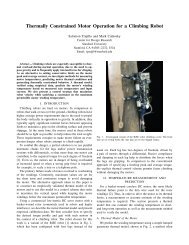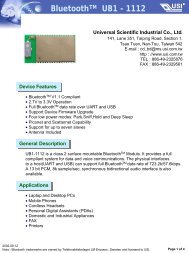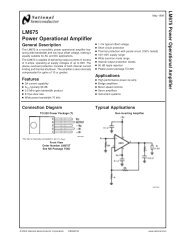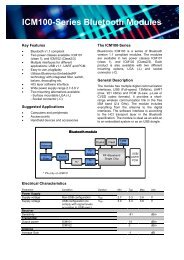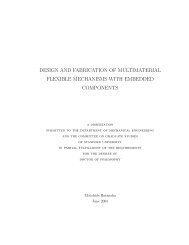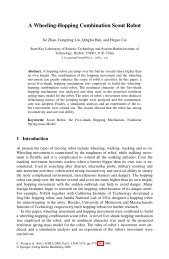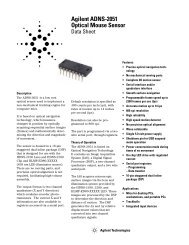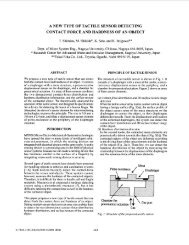Vicon MX Hardware System Reference
Vicon MX Hardware System Reference
Vicon MX Hardware System Reference
Create successful ePaper yourself
Turn your PDF publications into a flip-book with our unique Google optimized e-Paper software.
<strong>MX</strong> Cameras<br />
• Horizontal FOV at 9m would be:<br />
16.5 x (9/20) = 7.43 m<br />
• Vertical FOV at 9m would be:<br />
12.1 x (9/20) = 5.44 m<br />
Important<br />
These formulae take into account only the optical components of the camera<br />
and lens, thus they calculate the maximum possible theoretical Field of View<br />
from this combination. Poor illumination of the volume by camera strobes,<br />
less than optimal aperture or gain settings, or poor marker surface quality<br />
might all reduce the FOV in which a camera can recognize a marker below<br />
this maximum theoretical level.<br />
Please note when using these formulae that frequencies above the fullresolution<br />
frequencies given in Table 3-1 on page 3-2, the sensor area is<br />
reduced due to vertical windowing, as described in Field of View on page 3-4.<br />
Aperture and Depth of Field<br />
Another significant factor in choosing a lens type is the aperture (also<br />
known as the f-stop value, f-number, and F#), which refers to the<br />
speed with which the lens can pass light in a given time.<br />
The aperture is the ratio of the focal length of the lens to the diameter<br />
of the lens opening, which determines the amount of light that can<br />
pass through the lens in a given time. Smaller f-stop values (e.g. f2,<br />
f2.8) represent wider apertures that allow more light to pass through,<br />
while larger f-stop values (e.g. f11, f16, f22) represent narrower<br />
apertures that allow less light to pass through. Typically, faster lenses<br />
have larger diameter optics that can pass more light.<br />
Each f-stop value changes the lens opening from the next f-stop by<br />
a factor of 2. For example, decreasing the aperture from f11 to f8<br />
allows twice as much light to pass through. Increasing the aperture<br />
from f11 to f16 allows half as much light to pass through.<br />
The aperture and magnification affect the depth of field, that is, the<br />
portion of the image that has sharp focus. Immediately surrounding<br />
this area, there is a region in which the image remains in focus.<br />
Outside of this area, moving towards or away from the lens, the focus<br />
becomes progressively less sharp and the image appears out of focus.<br />
Thus, as the aperture and focal length decrease, the depth of field<br />
increases. Conversely, as the aperture and focal length increase, the<br />
depth of field decreases.<br />
3-8 <strong>Vicon</strong> <strong>MX</strong> <strong>Hardware</strong> <strong>System</strong> <strong>Reference</strong>



